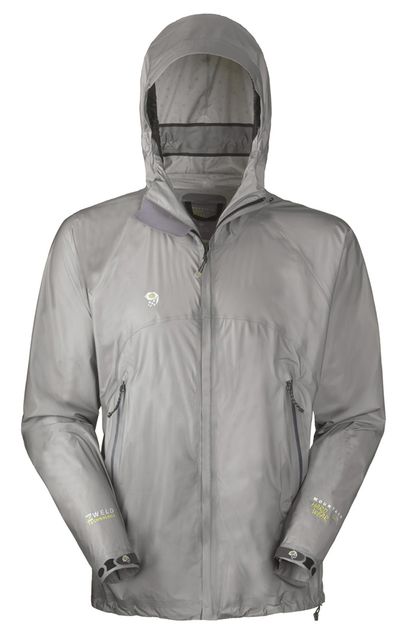Outdoor gear put to test on Utah’s highest peak

Mountaineering is an ultimate testing grounds for outdoor gear. Last month, on a quick two-day ascent, I climbed Utah’s Kings Peak, the state’s highest mountain at 13,528 feet. Here’s a rundown on the gear that worked, and some that did not.
TraiLeader Watch by Tech40: This do-all outdoors watch ($140, www.tech4o.com) has an altimeter, barometer, compass and thermometer plus an accelerometer to measure your speed and distance traveled while hiking or trail running. In my tests, all functions have worked fine, including the accelerometer, a cool feature that can track my distance on a training run to within a couple tenths of a mile.
But on Kings Peak I had trouble with the altimeter. Despite resetting the watch’s reference altitude at known points, the gauge was often wrong by several hundred feet. Changing atmospheric pressure may have been to blame, but no other time in the mountains have I seen this much variance.
Quark Jacket by Mountain Hardware: This high-end rain shell, which runs about half the weight of other light, waterproof- breathable rain jackets, has won praise in my previous tests, primarily for the $200 jacket’s extraordinary light weight and the small size to which it packs down.
In this test, however, the zipper broke on Kings Peak. With no snaps or Velcro, I was unable to secure the shell shut, leaving me vulnerable if the weather had turned bad. Though I think I was to blame for the breakage – I yanked on the zipper at home when it snagged, unwittingly cracking a bottom tooth – the scenario has reinforced a realization with me about durability disadvantages in ultra-light gear.
GlacierGel by Adventure Medical Kits: I treated a hotspot near my heel at the start of the hike with one of these blister pads and it stayed put as I trudged uphill many miles and more than 4,000 vertical feet. The unique pads ( www.adventuremedicalkits.com, $9.90 for a six pack) use a polyurethane film backing to protect skin from contamination. But the “hydrogel technology” – an absorbent bubble that contains 50 percent water – is the product’s unique feature. It swells as you go to protect damaged skin and help relieve pain.
Ultranord GTX-XCR boots by La Sportiva: I disdain heavy boots when tromping uphill. So on climbs like Kings Peak – a non-technical mountain where trekking poles, not ice axes, will get you up – I wear shoes like La Sportiva’s Ultranord GTX-XCR ($125, www.lasportiva.com), which are winterized trail runners that mate with short gaiters.
A Gore-Tex exterior keeps the shoes waterproof, and the tread grips well enough on all but the most precipitous terrain. On Kings, where the snow was scarce, the setup worked wonderfully. In deeper snow, the Ultranords are not winterized enough, I have discovered in other tests, as light and fluffy snow can seep through slots left slightly open where the gaiters attach to the shoe.
Trails Illustrated maps by National Geographic: For navigation on the trek in and ascent of Kings Peak – a 28-mile roundtrip from the trailhead at Henrys Fork – I employed National Geographic’s Trails Illustrated High Uintas Trail Map, a topographic map on waterproof paper in the 1:75,000 scale. Though made mainly for backpackers and hikers, these maps for popular backcountry areas across the country ($11.95, maps.nationalgeographic. com) are excellent even for the long approach and the straightforward climb on Kings Peak.
Accurate and up-to-date trails; slope shading to make contours and elevation pop from the page; and small included terrain details like ponds and marshes made finding our way up the mountain a cinch.